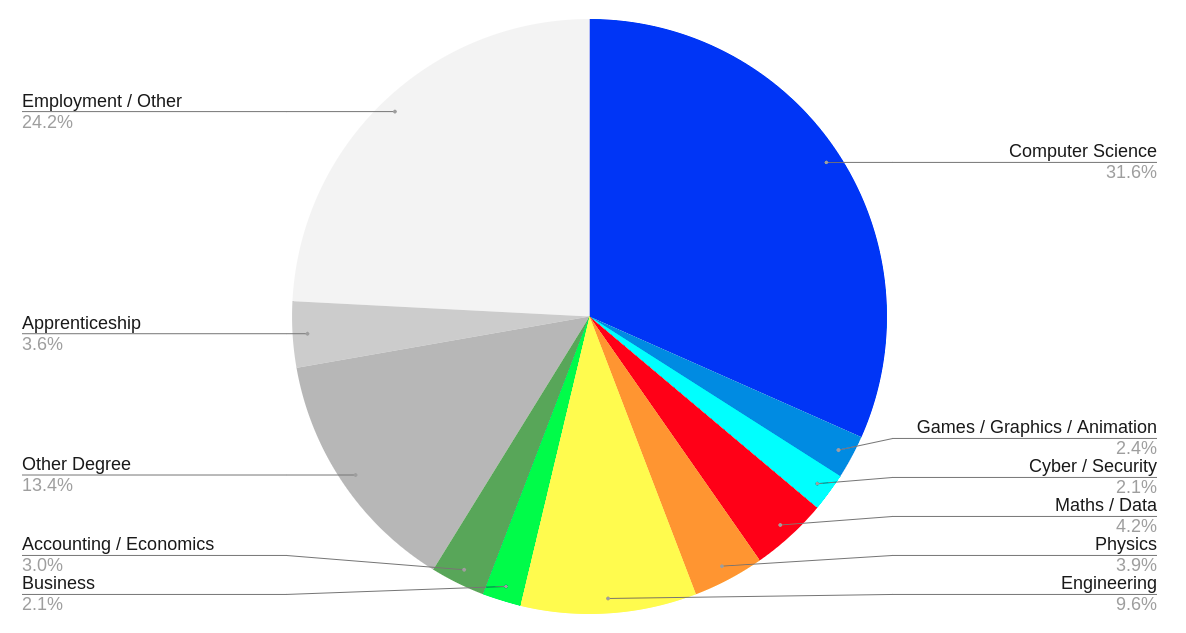
Computer Science
A level
“The rise of Google, the rise of Facebook, the rise of Apple, I think are proof that there is a place for computer science as something that solves problems that people face every day.” Eric Schmidt
“Computer science is the new Latin, because it underpins the digital world in the way Latin underpinned the analogue world.” Ian Livingstone CBE
"Unless we make computer science a priority, we risk making gender, class, and racial disparities worse as jobs flow to those with a computer science background." Susan Wojcicki
Computer Systems
Algorithms and Programming
For more information on the course content, please see this subject clarification guide.
In term 1 of Year 1, we focus on developing logic through writing algorithms both in pseudocode and in Java. In addition, we cover fundamental theory that underpins the course. In term 2, we start to build practical skills in JavaScript in readiness for the NEA, which we start in term 3 of Year 1.
In Year 2, we cover more advanced topics such as non-linear data structures, Boolean algebra and recursion.
Each lesson includes different activities designed to engage students, whilst also providing challenge and support, recall practice and comprehensive preparation for exams.
The OCR computer science A level is 80% external examination and 20% non examined component (NEA).
For the NEA, students have free choice with regards to the problem they wish to solve and their development language. Many students make web based solutions and games are a popular choice. Please note though that all marks for the NEA are based on the write up so it's not just coding!
The two most frequently studied courses alongside computer science are A level maths (approx. 80% of our students) and A level physics (approx. 50% of our students). Many of our students also study further maths (approx. 30% of our students).
Below are the destinations of our students from the last five years who completed a computer science A level. Over a third of them went on to study for a degree in a computer science discipline.

You can find the prep work for this course at prepwork.farnborough.ac.uk.
Q: What is the difference between computer science and IT?
A: In Computer Science, we learn how to make new software, whereas in IT you would learn how to master the use of existing software. Computer Science is about how computers work, IT is about the uses of computers with a particular focus on business and industry. If you are interested in logic, problem solving and learning how things work, the Computer Science course is the one to consider. Computer Science is an A level course with two final exams worth 80%. Entry requirements are higher than those for the BTEC IT course.
Q: What programming languages do I learn?
A: You will learn JavaScript and Java, two of the most popular programming languages in the world. JavaScript is an interpreted, dynamic language that makes the internet interactive. If you've learnt Python before, JavaScript won't take you long to pick up. Java is a compiled, static language that runs on billions of devices, including servers, desktops and mobile devices. Java has a lot in common with C# and VB.NET, which you may have come across before. Alongside these programming languages, we learn the database query language SQL.
Q: What computer do I need?
A: You can run all our software on Windows, Mac OS or Linux (the latest Chromebooks have Linux support and can easily run all our software). We recommend a quad core processor and 8GB of RAM. A reliable internet connection is a must as all our resources are online. You are welcome to bring a laptop into lessons if you like, but our classrooms are equipped with high performance PCs.
Q: How much overlap is there between the GCSE and the A level and is it a problem if I've not done the GCSE?
A: They overlap a lot, and if you've done a Computer Science GCSE (particularly with the OCR exam board), you'll find the first half term quite familiar. However, a good number of our students take the A level without a GCSE and they perform well. The most important things are that you have good logical thinking, some numeracy skills, an interest in the subject (see course content above) and tenacity. You can't give up each time your code gives an error.
Q: What enrichment activities are offered? Can I play video games?
A: We offer extracurricular activities on advanced programming, physical computing (Raspberry Pi, Arduino, etc.), computer graphics and game development. We also enter students for external competitions e.g. CyberCenturion and BEBRAS, as well as internal competitions.
Please see below for careers and labour market information for this course - use the refresh buttons to find out about different courses and careers, and use the left and right arrows to view more detailed information.
OCR
Everything is provided digitally and is primarily accessed using your College provided Google account. In addition, you will get enhanced student logins for GitHub and JetBrains.